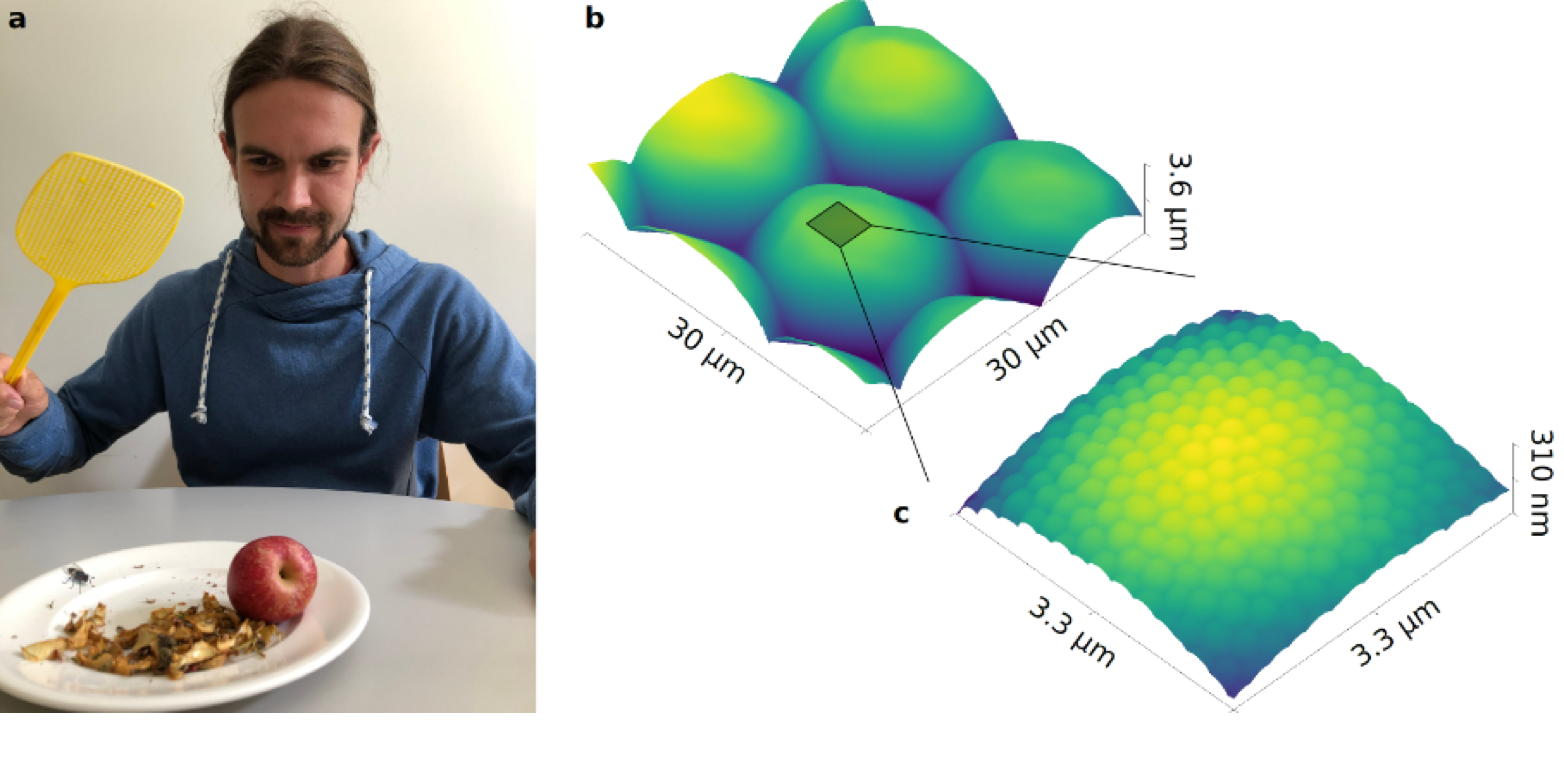Strange Encounters with Fly Eyes in the Materials Department
Nature has intricate ways to enhance the visual efficiency of fly eyes with nanostructured surface coatings. The related proteins were identified and similar nanostructures were synthesized in a collaboration of the University of Geneva and the FERROIC Lab at the ETH Zurich. ― But how on earth does this involve a group focused on abstract physical phenomena happening at space temperature? It's the Materials Department!

(a) PhD student Jannis Lehmann of the FERROIC Lab at the delicate job of sample preparation. (b) Atomic force microscopy image of a section of a drosophila fly eye showing the regular packing of eye facets. (c) Magnified view onto a single eye facet revealing the nanostructure responsible for the antireflex properties.
People wearing spectacles know the effect: Without additional precautions, their glasses show annoying reflections diminishing visibility. Because of that, they are usually antireflex-coated with multiple dielectric layers in a vacuum chamber at high temperature. Nature cannot copy this process, but since antireflex-coatings are a survival benefit because of the enhanced visibility, in particular in the dark, it has found other ways to achieve it.
Fly eyes, for example, feature a dense distribution of tiny, nanometer-sized humps with antireflecting properties. Manufacturing such nanostructures is immensely interesting to industry as it would, among other things, enable companies to achieve a perfectly black hue even on surfaces that are too large or uneven to apply complex multilayer coatings. Such surfaces can furthermore be anti-adhesive, self-cleaning or simply look quite awesome, e.g. on your new luxury car.
In a collaboration between the Department of Cell Physiology and Metabolism of the University of Geneva and the Laboratory of Multifunctional Ferroic Materials (FERROIC Lab) at ETH Zurich the proteins responsible for the antireflex nanocoating on the eyes of drosophila flies were identified by reverse engineering, followed by forward engineering into insect-eye-like surface structures in the lab. The architecture and the optical properties of the natural and artificial eyes were characterized I the FERROIC Lab by high-resolution microscopy.
Even more impressive than the scientific result is the fact that this collaboration has propelled the FERROIC Lab, which is normally dedicated to the study of abstract physical phenomena at space temperature, into the realm of projects with a direct real-life benefit.
How could this happen?
In fact, the surprising move of the FERROIC Lab was stimulated by the special environment of a materials department amidst physics, chemistry and biology on the one hand and with a span between science and engineering on the other hand. All these aspects come together in the development of novel functional materials, and it is an unbeatable advantage of the interdisciplinary environment of a materials department that biologists and physicists begin to talk to each other with the best possible outcome.
Reference: M. Kryuchkov, O. Bilousov, J. Lehmann, M. Fiebig, V. L. Katanaev: Reverse and Forward Engineering of Drosophila Corneal Nanocoatings, Nature 585, 383 (2020), external page DOI:10.1038/s41586-020-2707-9